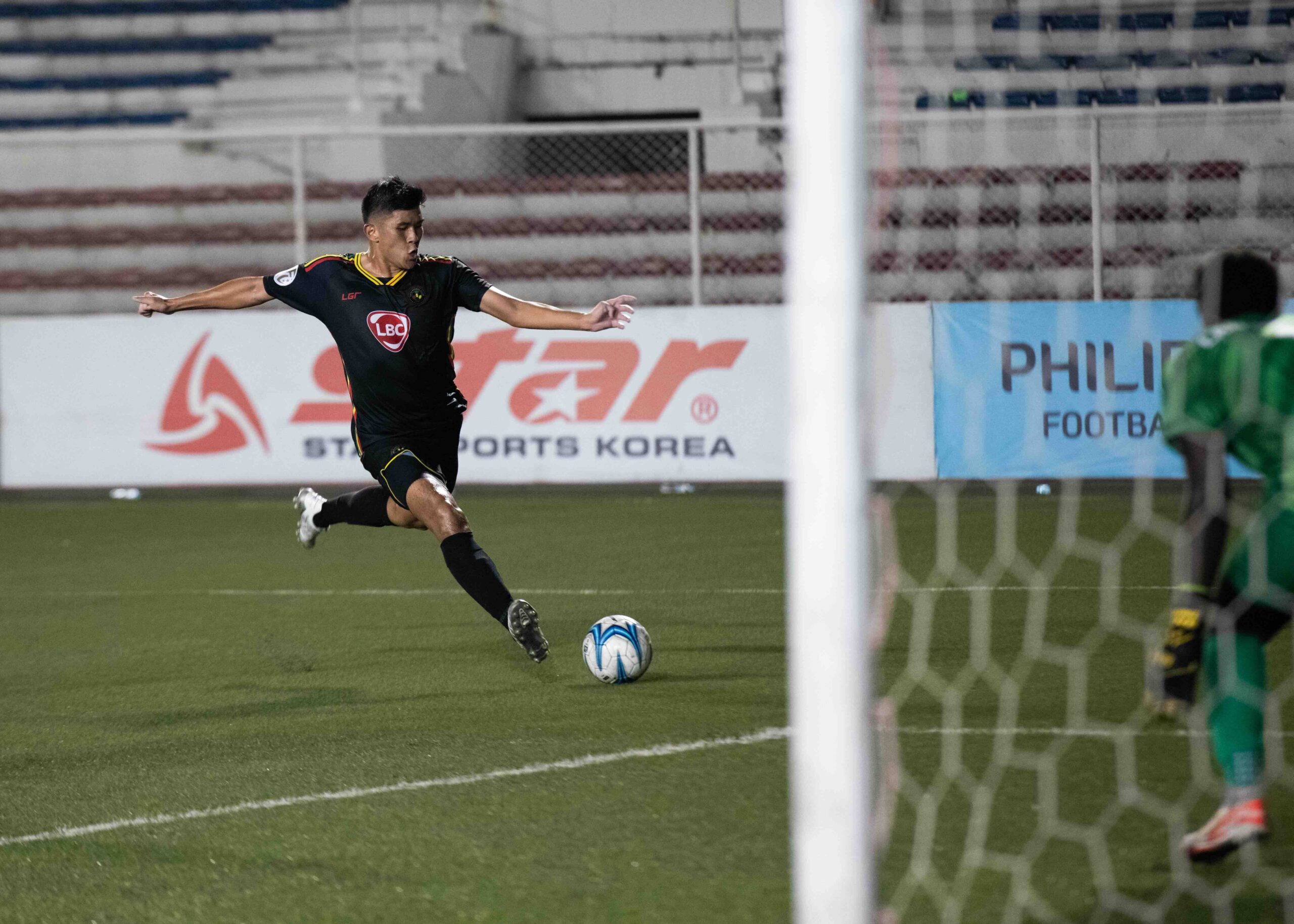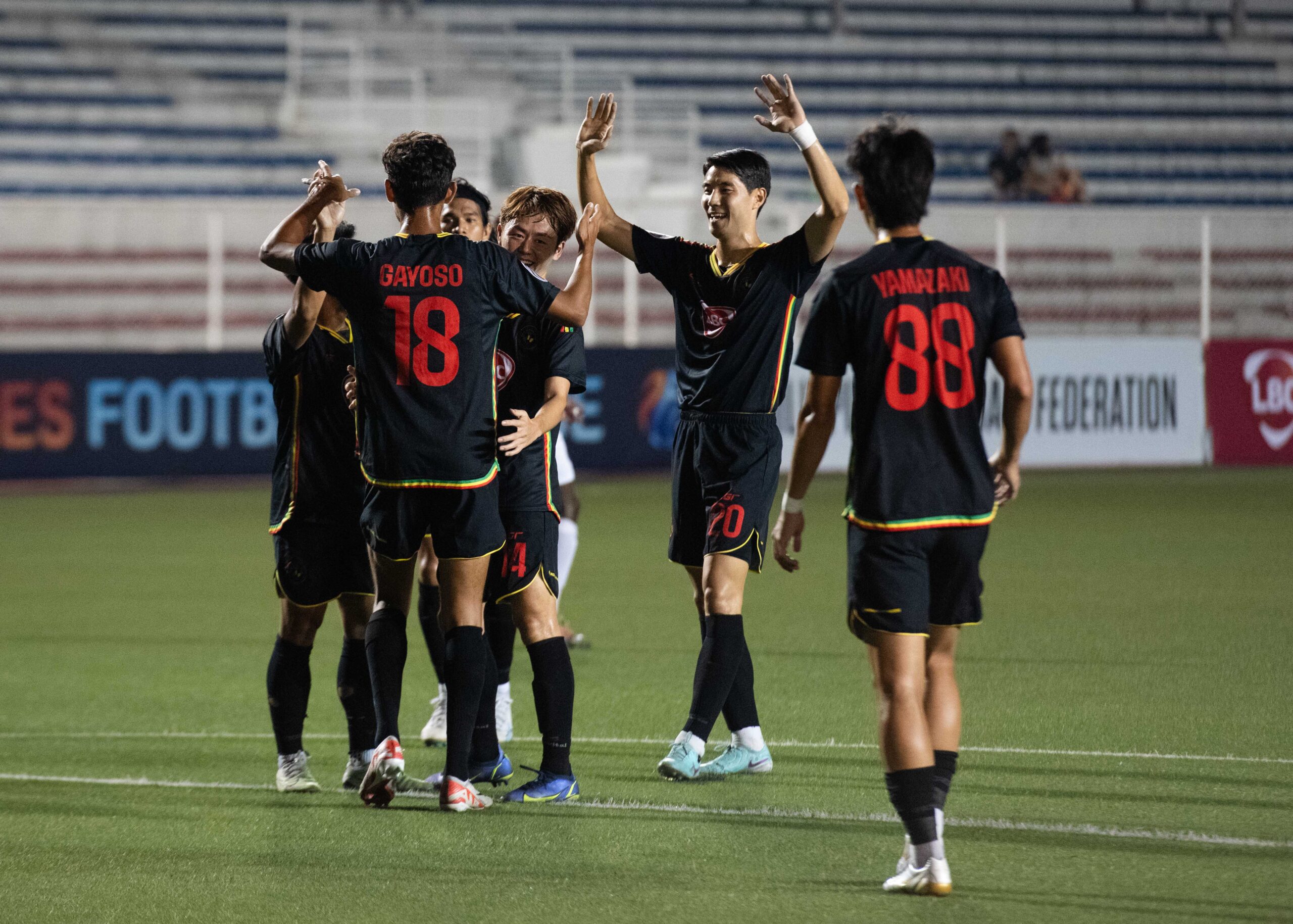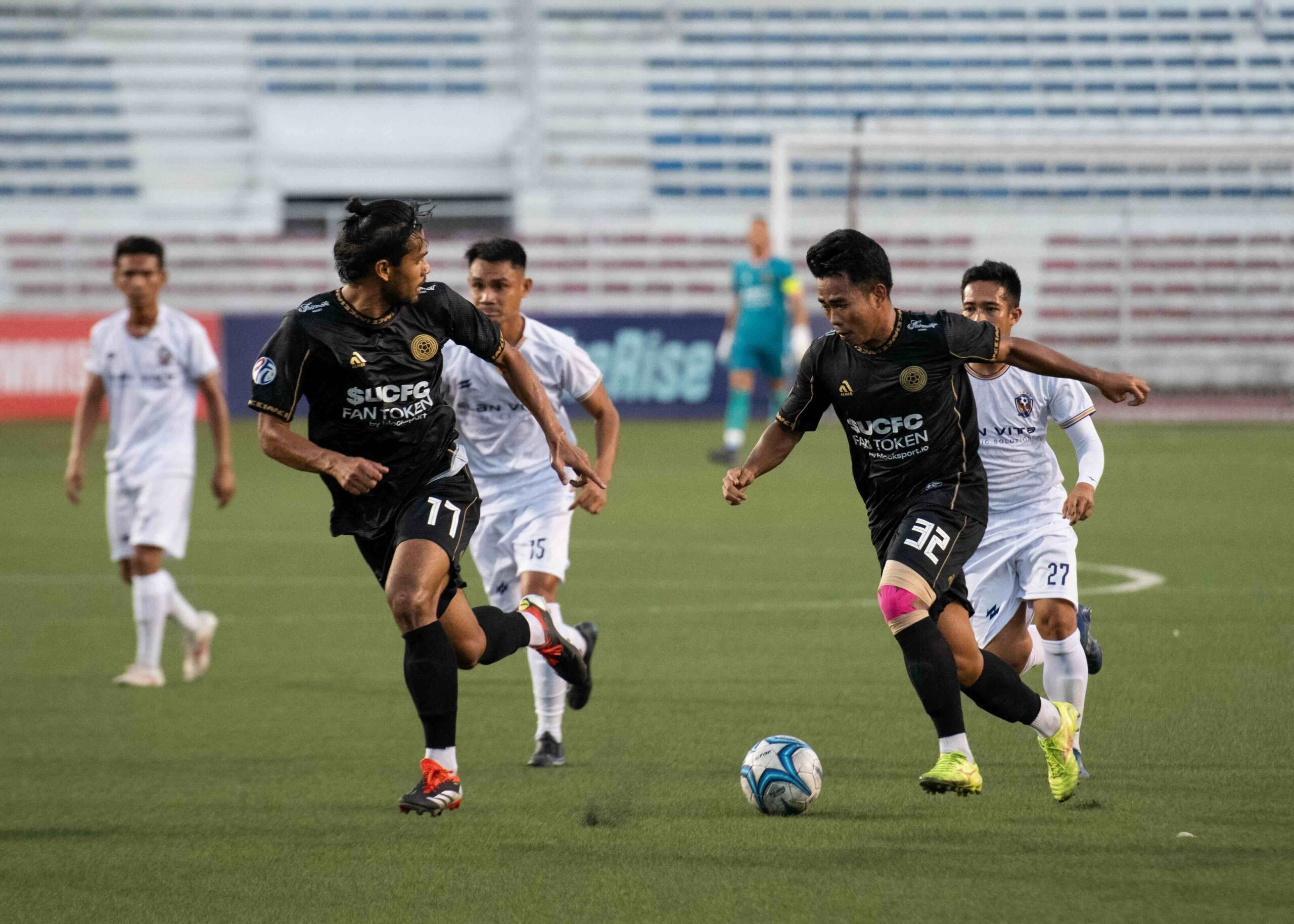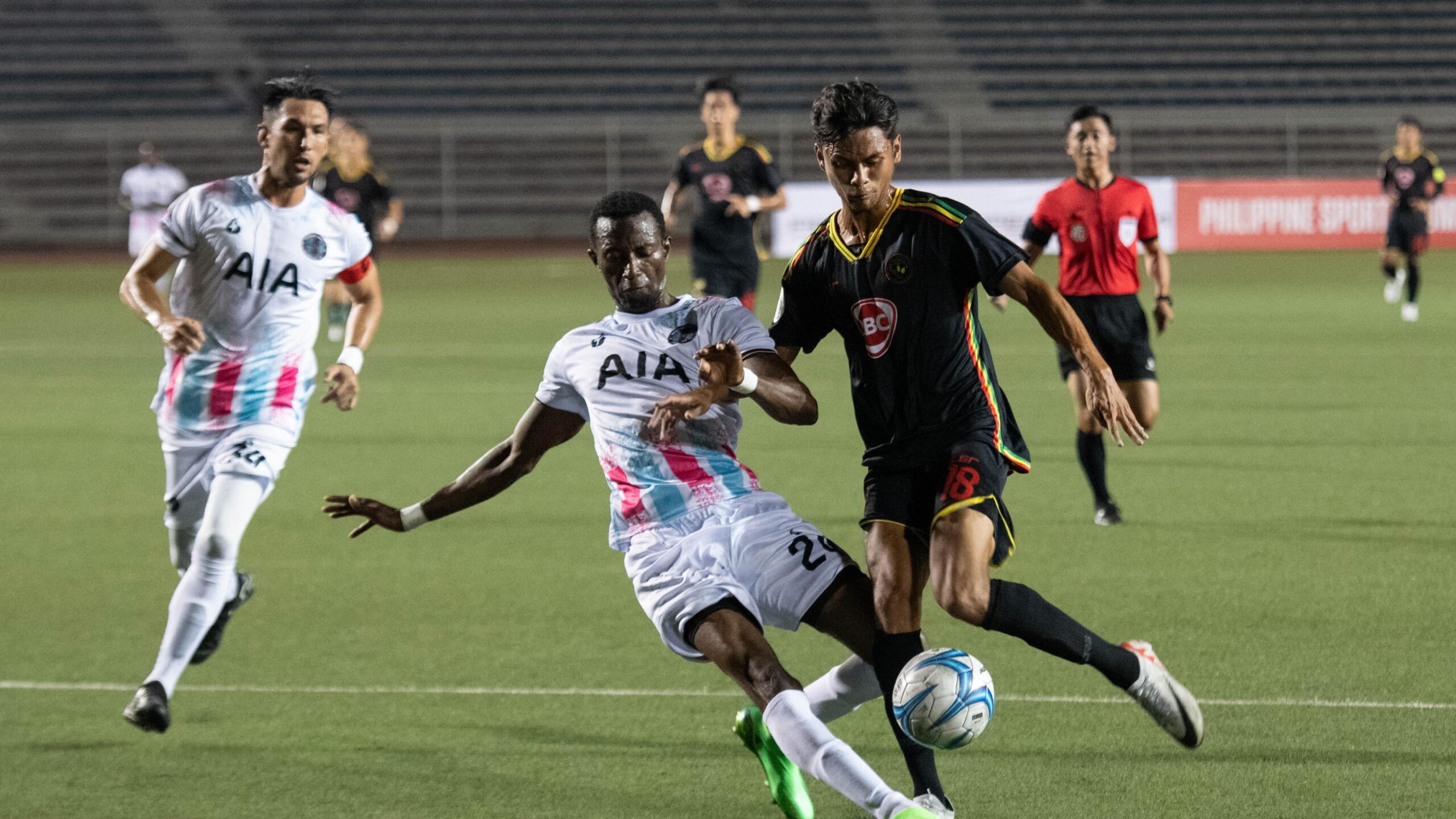Philippine club football is still searching for its place in the sun. Here’s how we think it can finally gain more popularity.
In just about every footballing country in the world, league play is the bread and butter of the typical football fan. There is a weekly ritual of watching your team on Saturday or Sunday for ten months of the year. International football is a diversion that only enters the collective consciousness during FIFA windows and only becomes the centerpiece every other year when there is a World Cup or a continental championship like the Euros.
But not in the Philippines. Here, the men’s national team, formerly known as the Azkals, and our women’s national team, the Filipinas, are pretty much the only football teams the vast majority of Filipino sports fans follow. The local top tier, the Philippines Football League, and other leagues like UAAP football, have yet to gain a big following.
This has to change. For the game to truly flourish we need a vibrant, sustainable, and exciting local club scene with a large fan base. It will be a long process, but here is how I think we can get there.
Craft a killer marketing strategy.
I worked in advertising as a creative for fifteen years. Before we worked on any campaign there would be many discussions between the client and our account planners on the strategy to communicate the product or service; only when the strategy was finalized would we get to work.
I believe the PFL should go through this procedure.
The league has to figure out its target market. It needs to determine its strengths and weaknesses, the opportunities and threats — AKA, a SWOT analysis. It also needs to mine for consumer insights. Then come up with a unique selling proposition. Then the strategy must be the foundation of all communications.
The way I see it, the PFL should position itself as a showcase for Filipino footballing talent. We have relatively few football fans in this country, but maybe we can convert people if we can appeal to their Filipino pride. Let’s show them that we indeed have an array of amazing Pinoy footballers. This is our unique selling proposition that no other league in the world can match.
Make the highlights the primary product.
Of all my points in this article, this one is probably the most important.
Many of us have little time to take in a full ninety-minute football game. Not even folks like me who really enjoy watching football. That’s why highlights are crucial.
The league has been releasing full match highlights on Facebook and YouTube. That is all well and good, and that form of highlight is definitely needed. But single-goal highlights are exceptionally important as well. Not only are they shorter, but no editing is needed. They can just be clipped out and sent to the league’s Instagram, Facebook, and TikTok accounts within minutes of the game concluding. Heck, even before the final whistle.
I have first-hand knowledge of the power of the short, single-play football highlight. When I commentate UAAP football and a goal occurs I immediately whip out my phone and video the replay on our monitor. When I get home I upload the clip on my Instagram as a reel. I routinely get thousands of views.

My biggest hit recently wasn’t even a goal. It was my clip of DLSU goalie Ico Mangoaoang’s double save against UE. As of the writing of this article, it had garnered over 54,000 plays and reached 2,531 accounts. Not bad for a poor-quality slow-motion highlight. Imagine if a video like that, with better image quality, was on an official page with tens of thousands of followers.
You can get creative with highlights. Make one with several of a certain player’s goals. Make a clip of the best saves, or assists. Or make a highlight reel of goals from players from a certain province or city. The possibilities are endless.
The more we can expose the excitement of Philippine club football to more people, the more sponsors will take notice, and the league can grow and become sustainable. Short, easy-to-consume content is key.
Who does football league Instagram really well? Major League Soccer, the top tier in the USA and Canada. Check them out. Tons of slickly produced goal highlights and other compelling content.
Go for the commercial team model.
I would love to see a world where our top teams represent cities; where communities could get behind their clubs, and we would have a true home-and-away feel for every match. But the reality is that our economy cannot sustain this model. Most of the wealth is still concentrated in Manila, the travel is horrifically expensive, and setting up a broadcast for just one game in one match day is not viable.
The Philippines does not have a long history of home and away team sports. Even in basketball and volleyball, our most-watched team sports. Yes, there is the MPBL which has community-based teams, but it’s not a pure home-and-away setup, it’s a hybrid. And some provincial teams will only play at home a few times a year.
For me, the commercial team model in a single venue is the most practical way forward for now. I believe that to entice sponsors, who provide the money that is the lifeblood of the league, we need to give them what they expect when they sponsor basketball and volleyball: their brand as the team name.
At the moment there are fifteen PFL teams and only one semi-commercial team, Dynamic Herb Cebu. I hope they grow in number soon. More sponsorships will mean more money and greater sustainability. I will not be too bothered if Sun Beach Sandals FC vs. Orocan Plastik na Walastik United is the big derby in local football. If it means the cash pours in and the wages get paid, then so be it.
Look for a title sponsor for the league.
The practice of having a league title sponsor is common in football all over the world. Up until 2016, Barclays Bank was the title sponsor of the English Premier League. When I watched an Indonesian league game several years ago the league had two title sponsors, Gojek the superapp and Traveloka the travel app. A top Indonesian bank is now the title sponsor. And as I have mentioned, Mitsubishi Electric is the sponsor of the ASEAN Cup. Previously Suzuki and Tiger Beer played that role.
The PFL used to be presented by Qatar Airways, but that connection has ended. It would be great if the league reached out to a big company and offered the title sponsorship at a reasonable cost on something like a three or five-year deal. This would be a simple way to generate some revenue, and having a title sponsor might signal to the rest of the business community that this league is worth partnering with.
Limit foreign players.
Let me start by saying that foreign players are essential to the development of Philippine football. When local players go up against foreign-trained players, they get a feel for the level of the game elsewhere and are forced to up their games.
This year the PFL is allowing five foreign outfield players and one foreigner in goal per team. You can have as many on your roster as you like. One team has fourteen foreigners on their payroll. This increase is supposed to help us become more competitive in international club competitions like the AFC Cup and the new ASEAN Club Championship.
I think we are allowing too many foreigners. In my opinion, the league should be showcasing Filipino talent. That’s hard if more than half of some starting elevens will be composed of foreign players. In the last weekend of action, five of the last seven MOTMs were foreigners.

The way I see it, bringing in overseas-born Filipinos already raises the standard of the league. You only need maybe three more foreigners on top of them. I would go for two foreigners from anywhere and one from an ASEAN nation. This would return the favor that some ASEAN leagues have with an ASEAN player quota that paves the way for players like Patrick Deyto and Amani Aguinaldo to play in Thailand.
Yes, playing in the AFC Cup is great, but I don’t think we should prioritize it too much. We have to sort out our league locally before we aim to succeed abroad. Let’s walk before we run.
The other reason why I would like to see fewer foreigners is financial. Foreigners are, with a few exceptions, more expensive than Filipino players. I am all about sustainability, and watching the bottom line is what every club here should be doing.
Getting back down to a three-foreigner limit wouldn’t stop clubs from looking abroad for players. They would just have to look for quality overseas-born Filipinos, of which there is definitely no shortage.
Increasing the pool of Philippine-passport players in our league will swell the pool of players available for selection for the national team. That is crucial in the one competition we want to win most of all: the ASEAN Mitsubishi Electric Cup, formerly known as the Suzuki Cup or AFF Championship. The tournament isn’t typically held during FIFA window dates, so bringing in overseas-based players is tough, and we usually need to rely on whoever is based here to cobble together a squad.
Have playoffs in every competition.
This year’s PFL will be a single-round-robin pure league. The team with the most points at the end of round-robin play is crowned champion.
The league has had playoffs before, especially in cup competitions. But I think playoffs should be a requirement for all competitions, including leagues.
To me, the traditional European-style pure league is ill-suited for the Philippine sports fan. We are used to a regular season, then playoffs that build to a final match or final series. It’s strange for Filipino fans to see a league decided in the regular season early when there are still matches left. I was in the stands when Ceres clinched the old UFL league by routing a weak team. It was a spectacle devoid of any drama.
This is especially true in a nation where there has traditionally been one powerhouse lording over everyone else. It used to be Ceres. Now it’s Kaya-Iloilo. This season might be different with some teams that seem to be at Kaya’s level. But I would still prefer an exciting playoff phase.

My proposal: the top six make the playoffs. Top two get a bye. In the first round third seed plays the sixth seed, fourth seed plays the fifth in one-game knockouts. Then in the semis, the top seed chooses which of the remaining teams they wish to play. The second seed plays the other one. The one and two seeds have twice-to-beat in the semis. Semifinal winners then play in a two-legged final. You can do it in a little over two weeks.
This way it’s likely the top two seeds win the title, but you have also created plenty of drama and suspense for fans along the way.
“But this is not football!” the purists will say. Well, the top tiers in Australia, North America, and Belgium all have playoffs.
Over the years, I have pitched in with club football in many ways. Writing, commentating, filming highlights, taking photos, and working as a club media officer. I’ve seen some success but also plenty of struggles.
But at the same time, we have more clubs than we have had since the old United Football League days. There is some hope. League commissioner Coco Torre is a dear friend who is experienced and sincere. Denis Lucindo has come in to help out with the content. He will be full of good ideas too.
We must change and evolve, but I believe in the potential of Philippine club football.
Images courtesy of Nikko de la Cerna and Who The Heck Are We? Podcast.
Related Stories:
Stephan Schröck: A Dream for Philippine Football
Challenge Accepted: New Philippine Football Coach Tom Saintfiet Is Aiming High
23 History Makers: The Faces Of The Philippines’ First Football World Cup Representatives
